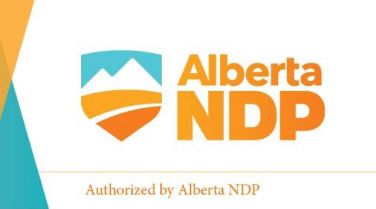
Four-Twenty | Jacqueline Biollo, MBA, ICD.D
Recently, to pay more attention to what’s happening around me and my student’s interests, I sought to learn more about the reasons and rationale behind ‘four-twenty’.
As a university educator, my areas of expertise are business, critical thinking, strategic planning, human resources, marketing, and communications. So, you would think I know more about ’four-twenty’. A term used to refer to marijuana or the act of smoking marijuana.
Or, as a former politician who campaigned when the Government of Canada was contemplating the introduction of the Cannabis Act, you would think I know that in October 2018, the government legalized and strictly regulated the production, distribution, sale, import and export, and possession of cannabis for adults of legal age (Government of Canada). Further still, as a member of the Subdivision and Development Appeal Board (SDAB), I participated in hearings that contemplated the appeal of decisions made by the Development Authority from cannabis retail business ventures regarding zoning and development permits.
However, these experiences have yet to provide me with direct or specific knowledge of or interaction with the product. The former, perhaps out of ignorance, the latter, out of choice. It’s been stated that the decision journey is for customers and that knowing yourself is true wisdom. I’ve had no interest in sampling the 30 grams of cannabis, which is the most you can buy from a licensed cannabis retailer or legal website at a time. But as I became more exposed to the conversations of university students regarding the common effects of marijuana, I felt it essential to change my ignorance or lack of knowledge and information regarding this product.
So why the term four-twenty (420)? As explored widely, 420 became the code for a group of teenagers in the 1970s to gather and smoke marijuana at 4:20 pm each day. Ritualistically standing or sitting against a wall at their school, they self-named their group the ‘Waldos’. Some municipalities have passed 420 bylaws to separate cannabis-related land uses from other uses/classifications. For example, enforcing that ‘general retail stores include convenience retail stores but do not include storefront cannabis retails or cannabis-related sale’, or introducing interpretive clauses to existing Land Use Bylaws to include definitions such as ‘cannabis production facility’.
Cannabis can be consumed through edibles, pills, capsules, tablets, powder, transdermal patches, vapes, tinctures (extracts), topicals, or, most commonly, smoking. The health effects of marijuana/cannabinoids are varied. From short-term health effects such as confusion, sleepiness, and impaired ability to concentrate or remember things to a euphoric sense of relaxation, heightened sensory perception, increased appetite, and an altered perception of time.
What I’ve learned from my students, in particular? They are more open to ‘trying new things’ than I was at their age. For example, students in my Marketing Research course recently found that in 2019, Statistics Canada reported that 4.6 million people, or 15 percent of Canadians over age 15, reported using cannabis, and that of a small sampling of university students between 18-30 years old in 2023, 63% do not use cannabis frequently. Yet, 57% surveyed are interested and willing to take cooking classes on cannabis food based as the main ingredient in the meal.
I also learned that some pretty amazing entrepreneurial endeavours are going on regarding producing the highest quality cannabis products, using sustainable and responsible cultivation practices, providing unparalleled cannabis experiences for customers and that premier producers are giving back to the community.
Academic institutes aren’t the only ones who have introduced policies that guide students, staff, participants, or stakeholders regarding business intentions to align policies with community expectations, organizational values, federal legislation, and municipal bylaws. For more information, visit https://www.canada.ca/en/health-canada/services/drugs-medication/cannabis/laws-regulations.html.
Survey respondents commented that they would like to see more government money go towards helping those with addictions and focusing efforts on education, awareness, and rehabilitation facilities rather than safe consumption sites. They strongly suggest that the Government of Canada not continue legalizing illicit drugs and that everyone take responsibility for maintaining a high standard of health and safety.
What is your position on Canada’s public policy on psychoactive drugs (used for recreational and entheogenic purposes)?
_____
Jacqueline Biollo indulges in substances like coffee, chocolate, and physical fitness to induce alterations in her perception, mood, consciousness, cognition, or behaviour. As a government and public relations consultant, she supports the ability of individuals to advocate for the right to have legal access, to seek services, and representation for things they believe in without fear of legal or social backlash.



